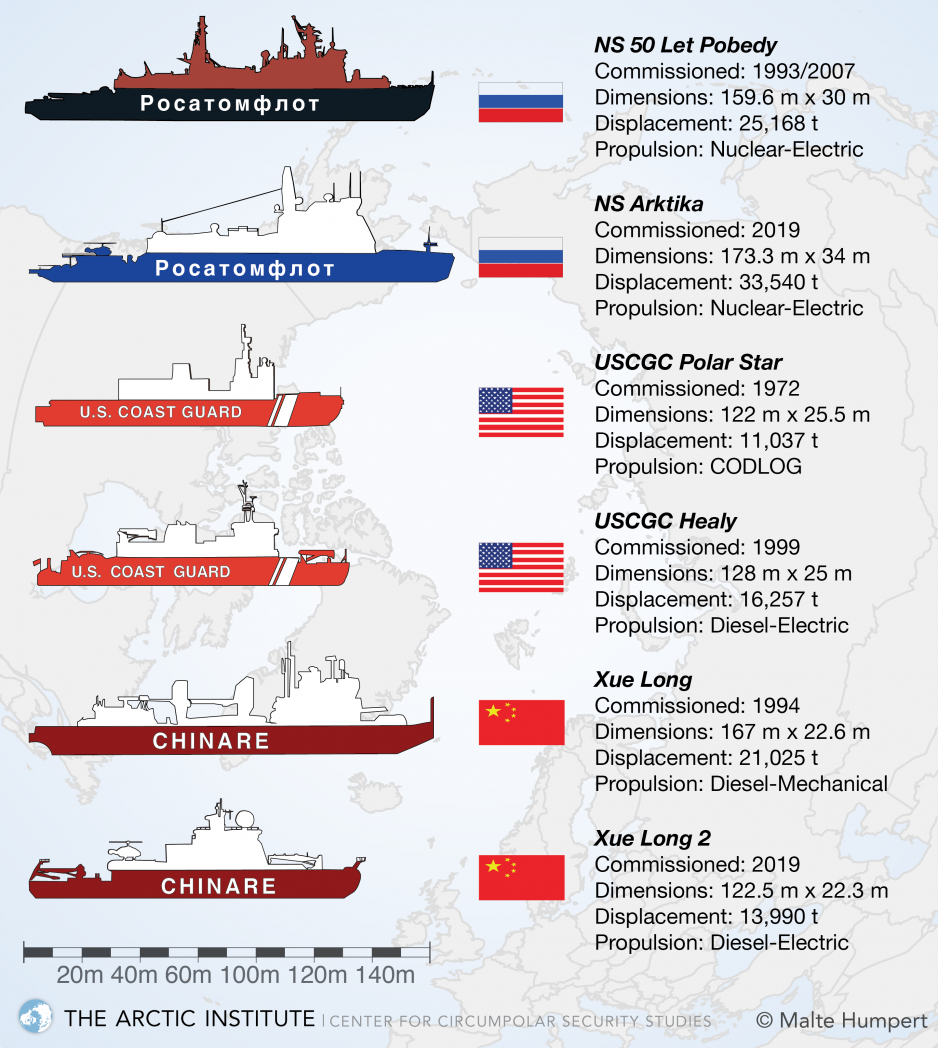China Launches Domestically-Built “Xue Long 2” Icebreaker

As China launches the Xue Long 2, its first domestically-built icebreaker, it now matches the U.S. in terms of operational icebreakers. And additional Polar Class icebreakers are already on the drawing board.
China launched the Xue Long 2 (雪龙2), which translates to "Snow Dragon", in an elaborate ceremony at the Jiangnan Shipyard in Shanghai on September 10, 2018. The new icebreaker follows on the heels of China’s first official Arctic policy announced in early 2018, in which the country placed special emphasis on maritime navigation and the importance of open access to the Arctic Ocean. It aims to include the region in its Belt and Road Initiative as a new "Polar Silk Road."
The new flagship icebreaker, operated by the civilian Polar Research Institute of China (PRIC), was developed in cooperation with Finnish ship-building specialists Aker Arctic and laid down at the end of 2016. Designs were finalized by the Chinese Marine Design and Research Institute in Shanghai and the vessel was assembled from 114 individual segments by the China State Shipbuilding Corporation in just over two years.
China increases capacity as U.S. falls behind
With two fully operational icebreakers, China now matches the capacity of the United States Coast Guard, which operates a single modern icebreaker, the USCGC Healy. The future of the U.S.’s sole remaining polar class icebreaker, the 42-year old USCGC Polar Star, slated to be decommissioned by 2023, has become increasingly uncertain since the vessel suffered an engine failure and engine room flooding earlier this year.
And it remains uncertain when the U.S. will be able to procure new icebreakers. "The U.S. Government Accountability Office has questioned the ability of the U.S. to meet Congress’s requests for new icebreakers," explains Andrew Holland, Director of Studies and Senior Fellow for Energy and Climate American Security Project.
"At a time when our main geopolitical competitors are investing in new icebreakers to take advantage of the melting Arctic, it is very dangerous that the U.S. refuses to spend the resources necessary to secure its place in the future Arctic. If the U.S. isn’t at the table as the Arctic regime is being decided, then American interests won’t be represented by the outcomes."
Xue Long 2 is highly maneuverable
The Polar Class 3 icebreaker is capable of breaking through ice up to 1.5 meters thick at a speed of 2-3 knots. As the first civilian vessel of its kind, the Xue Long 2 was designed with a dual directional hull and bow allowing it to break ice in either direction of travel. This unique feature makes it highly maneuverable in difficult ice conditions and allows it more flexible navigation in changing ice-covered waters. In a statement Aker Arctic called the ship "the world’s most advanced polar research vessel" based on a concept developed by the company following extensive open water and ice tests to verify the hull design.
The vessel is powered by two 16-cylinder and two 12-cylinder Wärtsilä diesel engines supplying electrical power to two 7.5 MW Azipod steerable propeller units accelerating the ship up to 15 knots or 27.8km/h. With a length of 122.5 meters, a breadth of 22.3 meters, and a displacement of 13,990 tons, the Xue Long 2 is smaller than the original Xue Long, originally designed as an ice-breaking cargo ship, which China procured from Ukraine in 1994 after the collapse of the Soviet Union.
The new icebreaker was designed specifically for scientific exploration and can house up to 90 crew and scientists during 60-day long voyages across 20,000 nautical miles. It features a 3.2m x 3.2m moon pool through the bottom of the vessel which allows access to ice below the ship for scientific experiments and research. The ship will provide capacity to China’s growing Arctic and Antarctic programs and complement the Xue Long which has conducted nine Arctic and 34 Antarctic expeditions since 1994.

Full steam ahead for China in the Arctic
The Xue Long 2 is expected to enter into service early next year following sea trials. Before the winter the vessel’s interior and electronic systems will be installed. And it may not be China’s newest icebreaker for long as the country is already working on the next generation of icebreakers capable of breaking through ice up to 3 meters thick.
These efforts match China’s growing political engagement in the Arctic region. Just this week Foreign Minister Wang Yi and Iceland’s Minister for Foreign Affairs Gudlaugur Thór Thórdarson agreed to deepen Arctic cooperation between the two countries ahead of Iceland assuming the rotating chairmanship of the Arctic Council next year.
Earlier in 2018 China published its long-awaited Arctic policy in which it emphasized the strategic importance of creating a "Polar Silk Road" and tying the region into its Belt and Road Initiative. The country’s major shipping company, COSCO, has already been reaping the rewards of the opening of the Arctic Ocean sending dozens of vessels along Russia’s Northern Sea Route over the past few years. Similarly, China’s energy majors and its development bank have been active investors in ongoing Russian oil and gas projects, including Novatek’s Yamal LNG.
